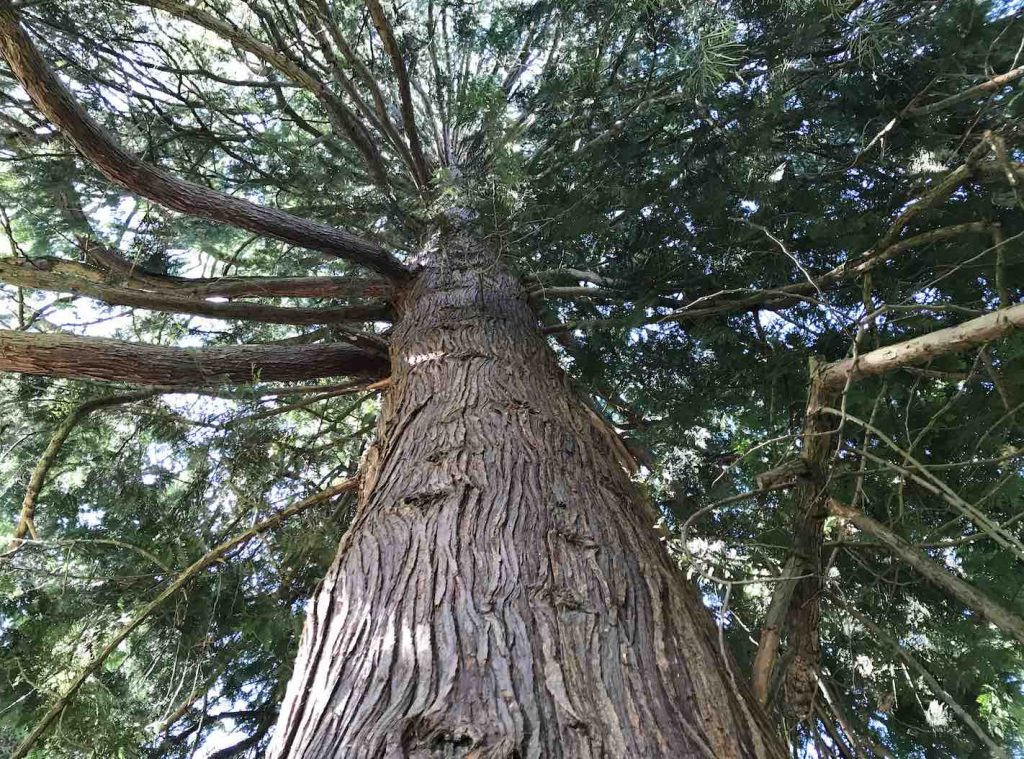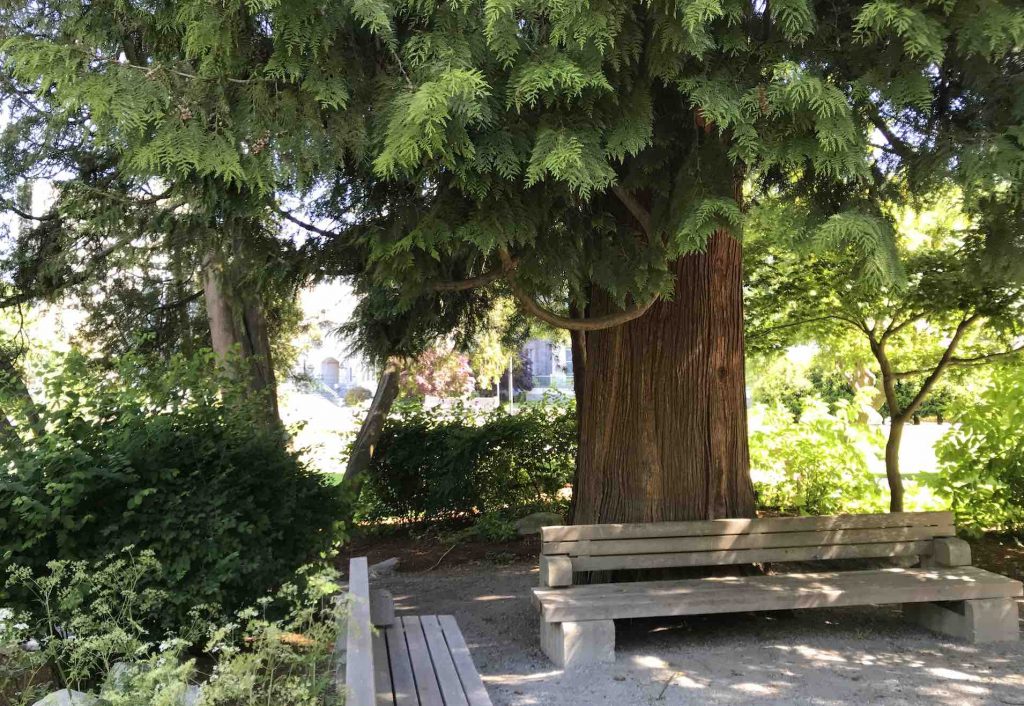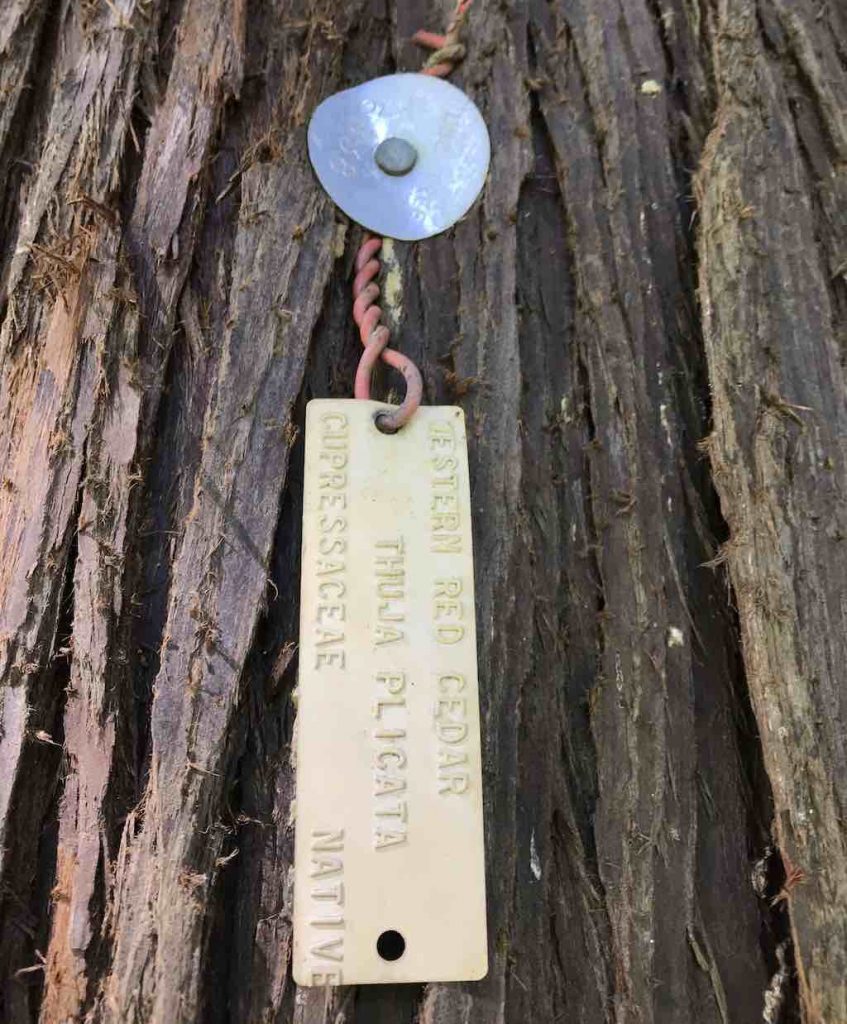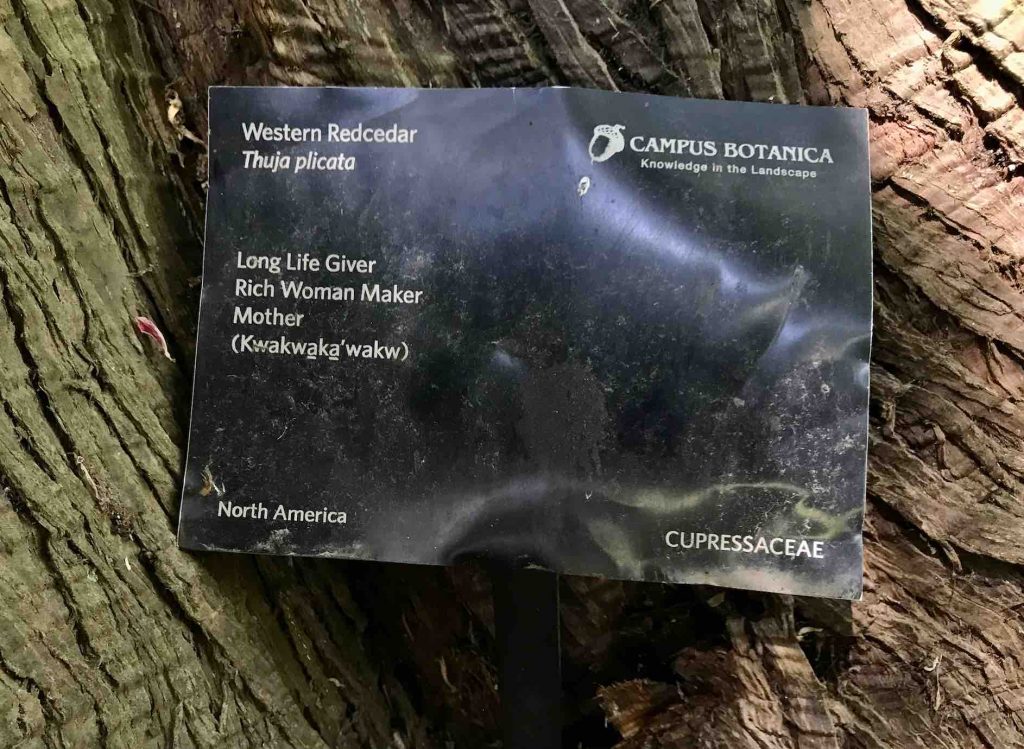As part of the situated learning for Module 1: Sensory Experiences, I went to the UBC Library Gardens to consider the question, “Can I smell time here?” My question was perhaps too complex, as it was more simple for me to “see” time or “hear” time, as expressed in my previous posts. But what about the scent of time? What would that even be? My nose guided me in the past to the flowering plants and bushes of the gardens, and indeed these do point to the seasonality of this garden area. Over the course of the term I witnessed the bloom of the garden’s plants and trees, and then watched as the flowers dropped their petals like pastel snow. I also noted that the gardeners placed a strong smelling cedar mulch throughout the garden. The mulch made me think about how the cedar tree itself has been used in BC over time, in various ways, and what this “resource” has meant to the development of the University, through the field of Forestry as well as in the cycles of settler-colonial wealth creation that sometimes returned to the campus in the form of philanthropic donations. I decided to focus my attention on a large Western Red Cedar (or “redcedar”), UBC Tree number 5838, that is located near a group of benches in the South garden near the UBC Main Library.

UBC Tree 5838, Western Red Cedar, Thuja plicata

Cedar tree near benches by the UBC Library

Tree tags for UBC Tree 5838
This particular cedar is quite large, and I wondered about its age. The south garden was planted between 1925-1930, but some of the trees moved there were a few years old prior to planting. It is possible that this tree can be seen in the lower left of this image taken by Vancouver photographer Leonard Frank in 1929.

UBC 1.1/1024, UBC Main Library and grounds. Photo by Leonard Frank, 1929. UBC Archives.
As with some of the other large trees in the north and south library “pocket gardens”, this Western Red Cedar is about 100 years old, if not a bit older. This century mark roughly corresponds to the opening of the campus in 1925. While this tree was likely planted on this spot, hundreds (thousands?) of cedars like it were removed from the site of the UBC campus since 1914 when the campus was clear-cut to make way for the University. It exists here as a cultivated specimen, not as part of a natural ecosystem.
In addition to the tree tags found on many campus trees at UBC, the tree was marked with a small metal sign from the Campus Botanica project.

Campus Botanica sign for Western Red Cedar tree
The Campus Botanica project was created years ago as a collaboration between UBC’s Creative Writing Program and the Social Ecological Economic Development Studies Program (SEEDS). The student-focused project placed 120 botanical signs throughout the UBC campus, offering different perspectives on how we might encounter plants and trees in this environment.
Returning to the question of smelling time, this old tree does not have much of a strong smell on its own (I actually put my face up to the bark and sniffed it). But surrounding the area the strong smell of cedar mulch said a lot about the life cycle of this “provincial tree” in this broader place of British Columbia. The smell of the mulch in the garden is the smell of money for some, and for others it is the smell of an endangered lifeway. A recent publication of the Canadian Forest Service, An Economic Assessment of the Western Redcedar Industry in British Columbia (2018), describes the tree species as one of the most valuable in BC and associated with $1 billion in economic activity annually. Yet, many have weighed in on the losses caused by the cedar industry, as described in this report by the David Suzuki Foundation, A Vanishing Heritage: The Loss of Ancient Red Cedar.
For me the question of time swirls around this particular tree, in relation to its own lifespan and that of the humans around it. I can’t articulate it well, but trees like this one are attached to place in particular ways that extend beyond the people that planted it or those who have sat below it. “UBC Tree 5838” exists in and through the campus, in spite of the institution and the goings on around it.
More information about the cultural role of cedar in this area can be found on the Indigenous Foundations website (UBC Faculty of Arts):
